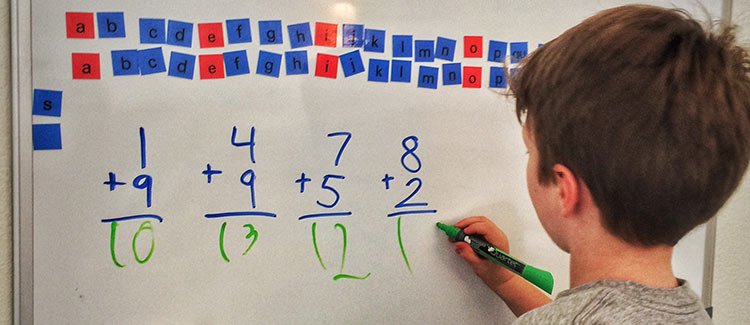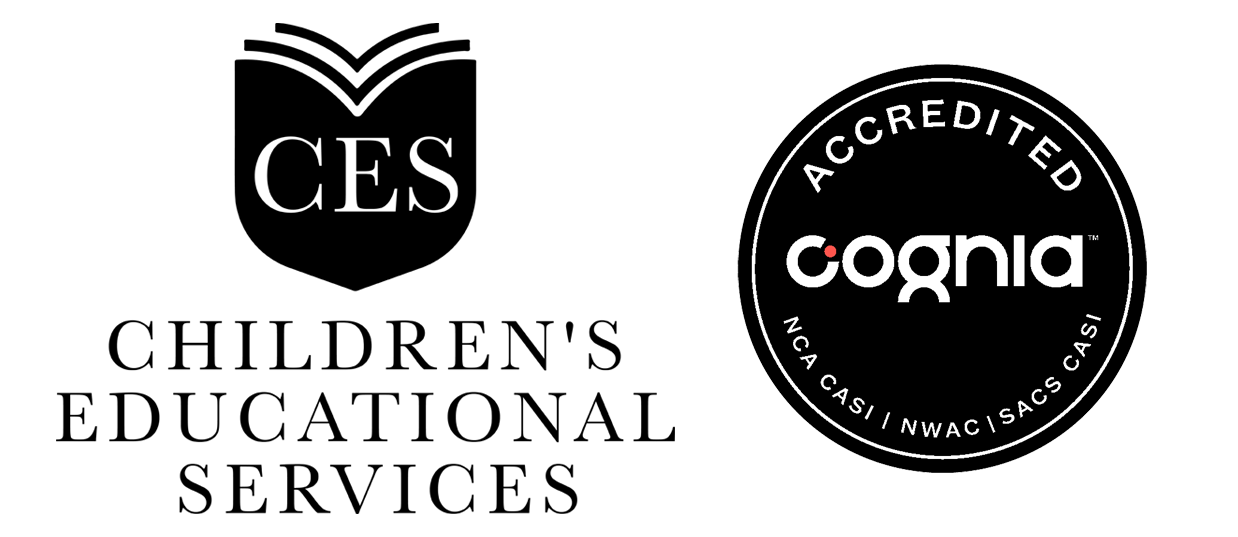Too many kids get math-phobic as they get older. Here’s how to keep your child passionate about math from kindergarten through high school.

Most young children like the activities in the math tips below — math-related activities like counting objects and playing simple math games — but for many, their natural affinity for numbers begins to erode as they advance in school and math classes become increasingly challenging. Once a child begins to feel even slightly intimidated by math, it can trigger a cycle of avoidance, poor performance, and anxiety. Girls are especially vulnerable because stereotypes about math start very young: research shows that as early as second grade, both girls and boys express the belief that math is for boys, not for girls. (For a great summary of this study, go to Science Daily.)
As a parent, you can encourage your children — girls and boys alike — to appreciate and yes, enjoy math by introducing numbers early and treating them as an intriguing part of daily life. These simple, grade-by-grade math tips will reinforce the concepts your child is learning in school and help her develop — and grow — a love for math.
Kindergarten: Munchy manipulatives
In kindergarten, children are introduced to a range of math essentials. Your child will learn to recognize numbers, count objects, and understand number sequence (for example: 5 follows 4 and 10 comes before 11). He’ll also learn basic shapes and identify them in his world (for example: “My bed is a rectangle. The sun is a circle.”)
Do this: Place a variety of small food items — raisons, nuts, dried beans, crackers, grapes, berries, or whatever you have on hand — and ask your child to separate them into small bowls. Now have your child count three of each of the food items onto a clean surface. How many total items are there? How many will there be if he adds two more of each item? What if he eats two? Make the game low-key and playful. (Allow plenty of snacking!) Follow your child’s lead; maybe he wants to shape the items into faces, or divide them according to preference, or stack them into towers. Encourage him to count out the items as he plays, ask simple addition and subtraction questions, and point out number sequences. The goal of the game is simple: hands-on, and tasty, number fun.
First grade: Shape sensations
In first grade, your child will hone her “number sense” — her understanding that numbers represent quantity and that we use numbers to calculate “how many” — whether she’s counting how many cookies are left in the cookie jar or how many kids she wants to invite to her birthday party. Other first grade math skills include: mastering addition and subtraction up to 20, understanding place values of 1’s and 10’s, and developing a more sophisticated grasp of geometric shapes.
Do this: Make play dough with your child (there are easy recipes online). Have your child measure out the ingredients and point out the difference between a teaspoon and a tablespoon, a half cup and a cup. When the play dough is ready, help your child cut it into basic geometric shapes: squares, triangles, rectangles, and circles. Have your child identify the different shapes and ask questions about what makes them different: How many sides does a triangle have? How do you know that’s a square, not a rectangle? How is a circle different from the other shapes? Then let her squish all the shapes together into a blob and make her own creations. (For a delicious variation, make shapes out of cookie dough, instead).
Second grade: Money madness
Welcome to big numbers! Your child will learn about the 100’s and 1000’s place values. He’ll also learn to add and subtract numbers up to 100; count by 5’s, 10’s and 100’s; and calculate standard units of measurement such as inches, feet, centimeters, and meters.
Do this: Create a store by gathering canned items, toys, books and other household objects — or whatever your child wants to include. Then get some play money (or raid the Monopoly box) and write up simple price tags. (For easy addition and subtraction, make the prices round numbers like $1, $5, $20.) Then let your second grader start wheeling and dealing. Tip: Price items on the high side so your child will have to do more difficult addition and subtraction). How much will it cost to buy a $2 can of soup and a $15 stuffy? How much change will he get back if he gives you a $20 bill? What if he only has a $50? Take turns being the cashier and customer, and invite a friend over to double the fun. Extra fun: When it’s snack-time, open a café and “sell” apples, cheese sticks, lemonade, and a treat or two.
Third grade: Math wars
The multiplication tables are a key component of third grade math, and since they’re a basic building block for math from here on out, now’s the time to make sure your child learns the tables. (Click here to print out a multiplication chart for your child.) This year, she’ll learn to multiply and divide numbers up to 100. She’ll also learn about simple fractions, how to categorize geometric shapes, and will be introduced to the concept of area vs. perimeter.
Do this: Play “Multiplication War” — a variation of the card game favorite — to help your child learn her math facts. Start by removing the face cards from the deck. The Ace represents 1. Deal the cards evenly between yourself and your child. Both players then place one card face up. In regular “War,” the player with the highest numbered card wins the hand and keeps the two cards. The player who has the most cards at the end wins the game. In this version, the player who calls out the product of the two numbers multiplied together gets the cards. So if you put down a three and your child a six, the player who calls out “18” wins the hand. Start out slowly and give your child time to come up with the answer before you call it out. As she begins to learn higher math facts, you can add the face cards back into the deck. With time and practice, your child’s calculations will pick up speed. Watch out: she may even leave you in the dust!
Fourth grade: Pizza lesson
This year, your child will learn to multiply and divide increasingly large numbers. He’ll gain a deeper understanding of properties of geometry, including concepts like “parallel,” “perpendicular,” and “symmetrical.” Fractions will also be an important area of focus this year, as he learns about equivalents, adding and subtracting like denominators, and simple fraction multiplication.
Do this: Order two or three small pizzas — or better yet, make them at home with your child. Most grocery stores sell pre-made pizza dough or uncooked pizza crusts, or if you have more time, make pizza from scratch (for recipe ideas , go here). Let your child choose the toppings and help with the preparations every step of the way. When the pizzas are ready, cut them into different sizes (cut one into eight slices, for example, one into ten slices, and one into twelve slices) and do some pizza math. How many slices are there in each half of each pizza? If you eat one third of the 12-slice pizza, how many slices will you eat? Then use the pizza slices to teach your child equivalents. For example, ask, “What is larger: 1/8th or 1/12th; 2/10ths or 5/10ths?” Calculate toppings, too, for example, if your pizza has five pepperonis per slice and there are 10 slices, how many total pepperonis? Invite friends and family members to join the fraction feast.
Fifth grade: Take learning online
By fifth grade, your child should be able to add and subtract fractions automatically. She’ll also begin simple fraction multiplication and division, as well as more complex two digit division. A major focus of fifth grade math is decimals: your child will learn to add, subtract, multiply, and divide decimals into the hundredths.
Do this: Your maturing fifth grader probably likes working independently, so reinforce math with online sources of math help and math practice, so she can work independently. Some free websites include Khan Academy, which has thousands of video math lessons (and other subjects as well) from the world’s greatest online teacher, Salman Khan. Sheppard software, WebMath.com, and Math.com offer a variety of math games, practice problems, and math information for a wide range of grades and math levels. Drexel University’s “math forum” also provides answers to math questions and grade-based activities.
Explore these sites on your own and then with your child to see if they are helpful. Working online isn’t a substitute for doing homework, of course, but can help your child practice math facts, find answers to math questions, supplement classroom learning, and introduce the curious student to new math concepts.
Middle school: Making math social
In middle school, your child will be learning increasingly complicated math concepts. Even if you understand what your child is learning, you may find he doesn’t want your hands-on help. This doesn’t mean you shouldn’t be involved. Talk to your middle schooler about what he’s studying in class, go over his homework with him, and if he doesn’t seem to be grasping the material at any point, encourage him to talk to his teacher. Check in with the teacher yourself, and consider getting extra help if your child is struggling.
Do this: Participating in a math club or a math circle is a terrific way to keep your child’s interest in math from waning during the middle and high school years. (“Math club” and “math circle” are often used interchangeably. In general, math clubs are after-school groups organized at a middle or high school and run by a math teacher. Math circles may be organized outside of the school setting, and are often led by a rotating group of math experts.) Not only do math clubs and circles make learning math both social and fun, math experts say they give kids a deeper understanding of math concepts than they get in the classroom. Find out if there are any math clubs or circles at your child’s school, or in your area. If no club exists, talk to school administrators about launching one. You can find more information about math clubs and circles at the American Mathematics Competition website and at the National Association of Math Circles, both of which provide information and resources for getting started.
High school: Scope out support
High school math varies year to year depending on your child’s grade and math level, and is likely to involve concepts beyond most parent’s grasp. Stay as involved as you can by checking in with your child about what she’s studying. Talk to her teacher if you have concerns. If your child is struggling, don’t assume the issue will resolve itself. At the high school level, math classes move quickly, and what starts as a small misunderstanding can quickly turn into a major problem. A single quiz fail may be a major blow to your teen’s confidence and without you even realizing what’s happening, she may begin to lose her passion for math.
Do this: Be on top of it. Most high schools offer free tutoring or regular math labs during or after school. Find out what’s available before your child needs help, so you can jump on it if a problem crops up. Your child may resist staying after school for math help because she’s embarrassed, or because she can’t stand the idea (what high schooler wants more school hours?) so getting her to go the first time may not be easy. If she goes once or twice and sees the difference it makes, she’ll be more willing to do it the next time. Bonus: seeking help for a problem is an important self-advocacy skill — one that will benefit your child in college and beyond!
If your child’s school doesn’t offer tutoring support, or if it doesn’t resolve the problem, consider finding a private math tutor.
Source: Great Schools


